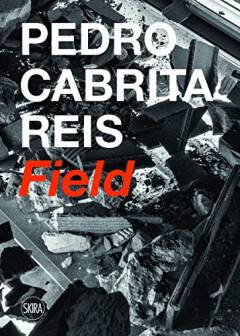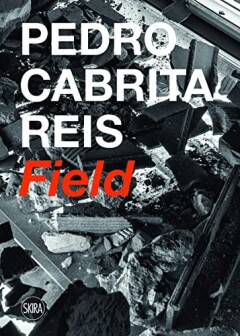
Je cadeautjes zeker op tijd in huis hebben voor de feestdagen? Kom langs in onze winkels en vind het perfecte geschenk!
- Afhalen na 1 uur in een winkel met voorraad
- Gratis thuislevering in België vanaf € 30
- Ruim aanbod met 7 miljoen producten
Je cadeautjes zeker op tijd in huis hebben voor de feestdagen? Kom langs in onze winkels en vind het perfecte geschenk!
- Afhalen na 1 uur in een winkel met voorraad
- Gratis thuislevering in België vanaf € 30
- Ruim aanbod met 7 miljoen producten
Zoeken
Omschrijving
Pedro Cabrita Reis (b. 1956, Lisbon), is one of Portugal’s most gifted and imaginative artists, having forged an international career from the early 1980s with his challenging and innovative paintings, sculptures and architectural interventions. As a self-defined classical artist, Cabrita is known for his forays into past histories and collective memories to rejuvenate his art; manifesting and declaring new perspectives within our contemporary cultural conversations. Cabrita has exhibited in many museums, galleries and public exhibitions internationally and his works are in private and public collections throughout the world.
Field dominates the vast interior of the church, spreading out, on, and across the central area of the nave. Its expansive, varied topography grounds and holds the floorspace, reinforcing the perception of the volumes above. The sculpture consists of an indeterminate grid of steel platforms which evoke the passerelle used during acqua alta conditions in the city. Complete within its boundaries, a multitude of uniform LED light tubes burn steadily on these platforms, underneath the occlusion of debris that appears to have rained down from above. The overlaid chaos of the debris field contrasts strongly with the regularity of the lights forming the grid below.
Through Cabrita’s use of vernacular materiality (industrial lighting, demolition fragments) which summon archaic conceptual mythologies (as above, so below; light versus dark), Field occupies a literal, as well as figurative middle space, setting up a state of affairs for the viewer to resolve physical, conceptual and spiritual tensions.
Field dominates the vast interior of the church, spreading out, on, and across the central area of the nave. Its expansive, varied topography grounds and holds the floorspace, reinforcing the perception of the volumes above. The sculpture consists of an indeterminate grid of steel platforms which evoke the passerelle used during acqua alta conditions in the city. Complete within its boundaries, a multitude of uniform LED light tubes burn steadily on these platforms, underneath the occlusion of debris that appears to have rained down from above. The overlaid chaos of the debris field contrasts strongly with the regularity of the lights forming the grid below.
Through Cabrita’s use of vernacular materiality (industrial lighting, demolition fragments) which summon archaic conceptual mythologies (as above, so below; light versus dark), Field occupies a literal, as well as figurative middle space, setting up a state of affairs for the viewer to resolve physical, conceptual and spiritual tensions.
Specificaties
Betrokkenen
- Auteur(s):
- Uitgeverij:
Inhoud
- Aantal bladzijden:
- 160
- Taal:
- Engels
Eigenschappen
- Productcode (EAN):
- 9788857248202
- Verschijningsdatum:
- 30/01/2023
- Uitvoering:
- Paperback
- Afmetingen:
- 165 mm x 220 mm
- Gewicht:
- 428 g

Alleen bij Standaard Boekhandel
+ 69 punten op je klantenkaart van Standaard Boekhandel
Beoordelingen
We publiceren alleen reviews die voldoen aan de voorwaarden voor reviews. Bekijk onze voorwaarden voor reviews.









